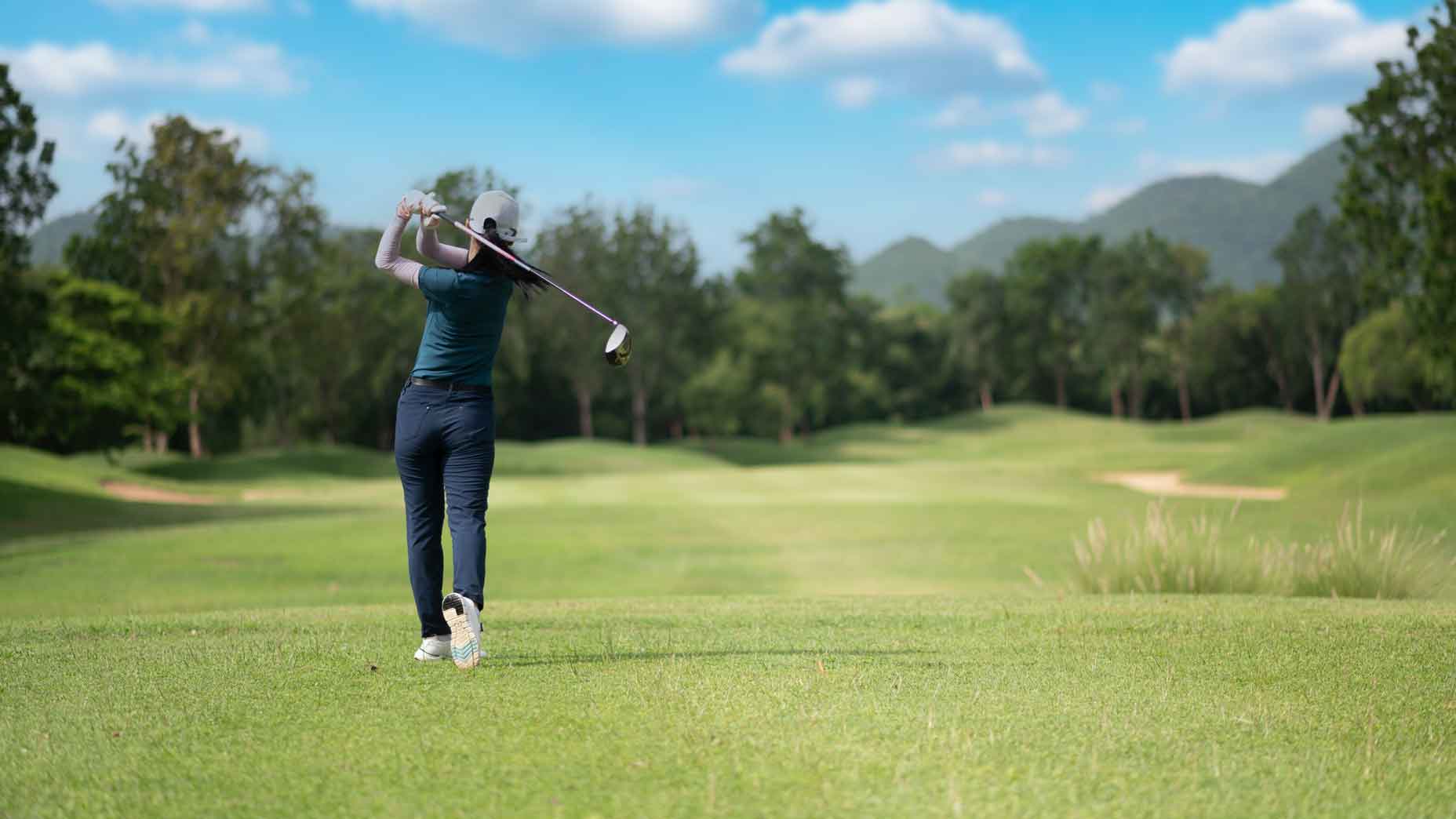Welcome to Shaving Strokes, a new GOLF.com series in which we share improvements, learnings and takeaways from amateur golfers just like you — including some of the speed bumps and challenges they faced along the way.
Since the beginning of time (or so it seems), amateur golfers have struggled with keeping the clubface square at impact. It’s almost a rite of passage for most beginner golfers, because nearly every one of them either slices or hooks the heck out of their shots.
Despite having played the game for 28 years, I’m no different.
Rather than continue to search for answers on my own, though, I was able to get a lesson from GOLF Top 100 Teacher Brian Mogg — which has proven to be more than beneficial when it comes to shaving strokes off of my game.
An easy tip to help square your club and hit more flush shotsBy: Nick Dimengo
In my situation, I needed to know the “why.”
Why was I slicing? When I didn’t slice, why was I hitting it pure? And why did my swing not resemble any of the ones I saw from the pros on TV?
In the video above, Mogg identified some major flaws in my swing, which weren’t just impacting the ball flight path after impact, but also causing loss of distance as well.
One of the reasons why I wasn’t able to square the clubface was because of my lack of rotation. So Mogg introduced me to a tricky two-club drill to try and correct the issue — along with plenty of other tips — so take a look for yourself to see his advice.
This 2-club drill can help keep your clubface square
Let me start with this: If you’re interested in trying this two-club drill, make sure you have someone aware of the situation — meaning they pull the club back and get out of the way! The last thing anyone wants is to get plunked by someone swinging a golf club.
Mogg echoes this in the video, saying, “in the odd chance that anybody does this with a buddy, please do it and get out of the way. It’s easy to do it and then start watching [where the shot goes].”
With that disclaimer out of the way, the video shows how Mogg’s able to help me make better contact, all by getting the club rotated higher above my head.
“You’re going to hit the ball, but because you tend to go back [with your arms] so wooden, something’s got to get the club up,” he says. “Well, if I dip my head, that gets the club up.
Envision a baseball swing to add clubhead speed (and distance!) with this drillBy: Nick Dimengo
“The problem’s not the head dipping. The problem’s not getting the club up.”
This is where Mogg begins to override my poor rotation, which adds better speed and momentum with this drill.
“Ready to go? On three, we’re going back together,” he tells me. “I’m going to help you try to override the [club]head.”
As I hit a couple of shots — some poor, some solid — he focuses in on me getting “more swing” from this drill, and to fully commit.
“You focus on the clubface and don’t change anything that you’ve done,” he says. “Let’s get this face square to slightly closed — I’m just going to add a little momentum to the process.”
“I’m looking for more swing, like [you can feel] the head is swinging more.”
As the results in the video show, I begin to hit more draws and cut out the slices or chunks. Sure, there were a couple mishits in there, but, overall, the tips from Mogg allowed me to create a better club path, which, in effect, led to a square clubface for better shots.











